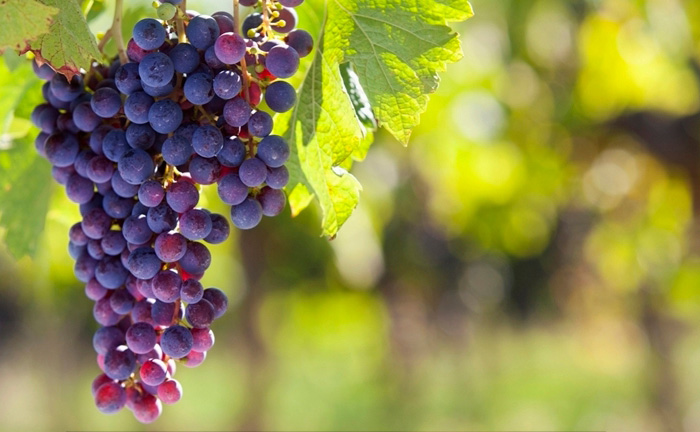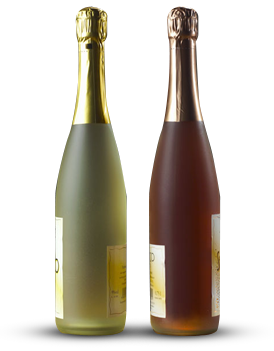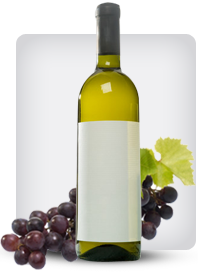

Category: Red Wine
Pre Menstrual Syndrome (PMS) And Diet – Red Wine
Posted onAs we mentioned in previous article, premenstrual syndrome is defined as faulty function of the ovaries related to the women’s menstrual cycle, it effects a women’s physical and emotional state, and sometimes interferes with daily activities as a result of hormone fluctuation. The syndrome occurs one to two weeks before menstruation and then declines when the period starts. In this article, we will discuss how red wine effects women with premenstrual syndrome.
It is recommended that women with PMS drink no more than 150 ml red wine a day
I. Definition
Red wine is an alcoholic beverage made of fermented grape juice without adding sugar, acids, enzyme or other yeasts. Moderate drinking red wine has been existed in Mediterranean cuisines for thousand of year in improving blood circulation in the body and decreasing the risk of heart disease and strokes.
II. How red wine effects women with PMS
1. Blood tonic
(Any food with red color is considered as blood and heart tonic in some traditional medicine). Red wine, in fact helps to release the blood stagnation in the body tissues and organs including the reproductive system thereby, decreasing the risk of premenstrual pain and cramps caused by blood stagnation in the abdominal region and increasing the transportation of nutrients to the nervous cell resulting in lessening the risk of fatigue, loss of concentration, and dizziness.
2. Melatonin
Moderate drinking (no more than 1 cup a day) red wine helps to improve the melatonin hormone thereby, increasing the function of internal clock in regulating “when it’s time to go to sleep and when it’s time to wake up” and lessening the risk of insomnia.
3. Flavonoids
Besides best known for it antioxidants property, it contains epicatechin, quercetin and luteol which also help to increase the digestive function in absorbing vital vitamins and minerals which are found deficient in women with PMS and inhibiting tumour growth.
4. Polyphenols
Red wine contains polyphenols which is a powerful antioxidant containing a polyphenolic substructure it has been used in combating neurodegenerative , some cardiovascular diseases. It also contains a chemical agent having anti-aging effects including slowing the process of skin wrinkling.
5. Resveratol
It also contains high levels of resvertol which is essential for immune system in inhibiting irregular cell growth and fighting against inflammation including the reproductive organs caused by cell oxidation.
finally, it recommend that you drink one to 2 cups of green tea to insure daily body detoxifying and increase production of stomach acid in absorbing vital vitamins and mineral. Green tea contains green tea oxidative agent, but is found to be absorbed by the body before reaching kidney.
Wolfgang Puck’s Succulent Short Ribs Paired With a Noble Red Wine
Posted onWolfgang Puck has media magic, but he was never a flash in the pan. He came from humble Austrian beginnings, trained at the top-tier 5-Star French restaurants, then transplanted to California where he eventually opened his star-studded eateries Spago, Chinois, and Postrio, which led to his building an empire while also helping to raise over $ 25 Million for charities.
The man is solid as his Austrian national roots, driven by centuries of inborn love of beauty, excellence, and indulgence. This may be the secret heart of his stupendous success and even his trademark motto “Live Love Eat”.
For even as the three nations that Wolfgang has called home struggle with the rest of the world for a new ground, the comforting warmth and deliciousness of this recipe, and the meditative quality of its preparation, feels and tastes as rich and sustaining as the solid roots of his history and the soaring heights of his career. Follows is a wine suggestion to make a magnificent match.
Ingredients:
1 bottle full-bodied red wine, such as Côtes du Rhône
2 medium carrots, coarsely chopped
1 large leek, white and tender green, coarsely chopped
5 garlic cloves, coarsely chopped
4 parsley sprigs
2 thyme sprigs
1 bay leaf
8 beef short ribs (about 5 1/2 pounds), trimmed of excess fat
Salt and freshly ground pepper
1/2 cup all-purpose flour, for dredging
1/4 cup vegetable oil
1 quart rich veal stock, or one 6 1/2 – ounce container demiglace diluted in 3 cups of water (see Note)
2 tablespoons grainy mustard
Instructions:
In a large saucepan, bring the wine to a boil over moderately high heat. Remove from the heat and add the carrots, leek, garlic, parsley and thyme sprigs and bay leaf. Let the marinade cool. Spread the short ribs in a large shallow baking dish in a single layer. Pour the marinade over the ribs, cover and refrigerate overnight.
Preheat the oven to 300°. Remove the short ribs from the marinade. Strain the marinade, reserving the liquid and vegetables separately. Discard the herb sprigs and bay leaf.
Season the ribs with salt and pepper and dredge them in the flour. In a large skillet, heat 2 tablespoons of the oil until almost smoking. Add half of the ribs and cook over moderately high heat until well browned, about 4 minutes per side. Transfer the ribs to a large roasting pan. Brown the remaining ribs in the remaining 2 tablespoons of oil and add them to the roasting pan in a single layer.
Pour off all but 1 tablespoon of fat from the skillet. Add the reserved vegetables and cook over high heat until beginning to brown, about 4 minutes. Spoon the vegetables over the ribs. Add the marinade to the skillet and bring to a boil. Pour the marinade over the ribs and add the veal stock. Cover with foil and bake for about 3 hours, or until the meat is very tender and almost falling off the bone. Transfer the ribs to a large baking dish. Leave the oven on.
Strain the cooking juices into a large saucepan and skim the fat from the surface. Boil over high heat until reduced to 2 cups, about 15 minutes. Whisk in the mustard and season with salt and pepper.
Pour the sauce over the ribs. Return the ribs to the oven and bake for 30 minutes. Let cool slightly before serving.
The short ribs can be prepared through Step 5 and refrigerated for up to 2 days. Let return to room temperature before baking.
———————
From the Tamayo Family Vineyard is their 92-point proprietary red, CANA. Inspired by the first century miracle at CANA, this New World red can be prized by discerning palates all over the world. Winner of the Gold Medal at the World Wine Championships 2009, and the Silver Medal at the San Francisco Chronicle Wine Competition 2009.
Find More Red Wine Articles
I Love Italian Regional Cuisine – Pairing Calabria Cuisine With Red Wine
Posted onCalabria is the toe of the Italian boot. It is located in the southwest corner of Italy, with 500 miles of coastline on the Ionian, Mediterranean, and Tyrrhenian Seas. This region has belonged to so many other countries over the years, leading to quite a variety of local specialties. When you taste the delicious local food you wouldn’t think that Calabria’s soil tends to be poor.
Alici a Beccafico (Anchovies Beccafico style) is considered a main dish, but some people prefer it as an appetizer. Others avoid anchovies altogether; I think they are missing out on many tasty, albeit salty, dishes. You start preparing this dish by gutting the anchovies and soaking them in a dry white wine. Then you stuff them with a combination of stale, crust less bread garlic, grated Pecorino cheese, and some spices. Then you fry them. Suggested wine pairings include Sangiovese-based wines such as Chianti DOCG from Tuscany.
Calabria is known for great vegetables. Make sure to try Melanzane Fritte con Mozzarella e Olive (Fried Eggplants with Mozzarella and Olives). In addition to the title ingredients this recipe calls for tomatoes, onions, herbs, and spices. As always, salt the eggplant to remove the bitter juices. Even if you are not a vegetarian you’ll enjoy this dish with an Italian Pinot Nero or one of the many Barbera DOC wines from Piedmont.
Costolette d’Agnello alla Calabrese (Lamb chops Calabrian Style) is easy to make and simply delicious. Besides the chops you’ll need ripe tomatoes, an onion, green olives, sweet peppers, olive oil, and some spices. Once you’ve prepared the veggies, this recipe is fairly quick. Suggested wine pairings include Chianti DOCG, Chianti Classico DOCG, or Brunello di Montalcino DOCG from Tuscany, and Barolo DOCG from Piedmont.
Cinghiale all’Aspromonte (Wild Boar Aspromonte style) is a local specialty. Hang the boar saddle, remove the rind, finely chopped bay leaves, oil, salt, and pepper and cook on a spit meat, basting it with the juices until done. Somehow, I don’t think making this delicious dish is as simple as it sounds. Enjoy with a Vino Nobile di Montalcino DOCG, a Cabernet Sauvignon based Super Tuscan from Tuscany, a Barbaresco DOCG, or Barolo DOCG from Piedmont.
Capretto Farcito (Stuffed Spring Kid) is an unusual but delicious local specialty that is often served at Easter. The meat is boned and then stuffed with pasta and the giblets and baked. Enjoy this dish with an Aglianico del Vulture DOC from the neighboring region of Basilicata, a Taurasi DOCG from Campania, or a Torgiano Rosso Riserva DOCG from Umbria.
I Love Italian Regional Cuisine – Pairing Latium Cuisine With Red Wine
Posted onDon’t be surprised if the word Latium doesn’t ring a bell. It’s in the center of Italy and its capital is Rome, the Eternal City. As the Italian writer Silvio Negro said, “Roma, non basta una vita,” Rome, a lifetime is not enough. Just so you don’t get the wrong idea, he wasn’t talking about the wine. Once upon a time Rome was home to a great wine, Falernian, a sweet white wine that poets praised. I think you’ll enjoy the Latium specialties and their wine pairings described below. You may even serve them at a toga party.
Carne alla Pizzaiola (Beef Pizzaiola) is based on round steak with fresh tomatoes, oregano, olive oil, garlic, and chopped parsley. Some people add chopped olives and anchovies. Suggested wine pairings include Cerasuolo di Vittoria DOCG from Sicily, Rosso Piceno DOC from The Marches, and Sangiovese di Romagna DOC from Emila-Romagna.
Coda all Vaccinara (Stewed Oxtail with Celery) calls for a cup of red wine to go with two pounds of oxtail. Some people go with a white wine to keep the sauce from being too dark. You may want to parboil the celery for the same reason. In any case, don’t use a “cooking wine”. Never cook with a wine that you won’t drink. Some people suggest Barolo DOCG from Piedmont. I’d look for a Cesane del Piglio DOCG, which was awarded this sometimes prestigious designation in 2008. It’s the first Latium DOCG. If you don’t want to pay for the letter G (as in guaranteed) try a Cesane di Affile DOC or a Cesane di Olevano Romano DOC.
Porchetta (Roast Suckling Pig) is a great party dish, but it’s hard to prepare and takes a long time to cook. Potatoes and onions cooked in the drippings are just delicious. Recommended wine pairings include Abruzzi Montepulciano d’Abruzzo Colline Teramane DOCG, Chianti Classico DOCG, and Vino Nobile di Montepulciano DOCG. Or you can go local with the Cesane del Piglio DOCG.
Another great Latium dish is Saltimbocca alla Romana (Veal and Ham Rolls) starring veal scallops, sliced prosciutto, and white wine. Saltimbocca is not as hard to make as the suckling pig, but itspreparation is somewhat tricky. Suggested wine pairings include Cesane del Piglio DOCG, the Piedmont Barolo DOCG, or a Tuscan Brunello di Montalcino DOCG.
I Love Italian Regional Cuisine – Pairing Tuscan Cuisine With Red Wine
Posted onEverybody has heard of Tuscany in the central western part of Italy on the Tyrrhenian Sea. Tuscany is famous for being the homeland of the Italian Renaissance, and its center, Florence is one of the world’s top tourist sites. Tuscany is the birthplace of an interesting, albeit often expensive wine revolution. Super Tuscans, red wines made according to winemakers’ art rather than bureaucrats’ fiats blew a hole in the official Italian wine classifications. The best Super Tuscans are prized the world over, even though their official ranking is plebian, and their price is semi-stratospheric. Great, what about the food?
What are some Tuscany food specialties that go with red wine? Before we answer, a word or two of warning. You can get the recipes from an Italian cookbook or the Internet, either from the Italian or the English-language name. You may have to make some substitutions. We only recommend wines that are fairly available in many parts of North America. When you’re in Tuscany, make sure to try the local specialties with relatively unknown wines.
Arista di Maiale con Cannellini (Pork Loin with Cannellini Beans) is made with cloves, rosemary, garlic, olive oil, and ideally cannellini (white kidney) beans. You can substitute Great Northern or navy beans. This dish may also be enjoyed cold. If your pockets are deep go with a Brunello di Montalcino DOCG wine. Other good choices are Chianti Classico DOCG or Chianti DOCG. By the way, DOCG is the best Italian wine classification, which doesn’t always mean the best wine. The G stands for Garantita, but life holds few guarantees and DOCG isn’t one of them.
When you are hungry for a steak does Italy come to mind? It should, especially Bistecca alla Fiorentina (Broiled T-bone Steak). These steaks are huge. I remember one I enjoyed in Florence, Italy long, long ago that was simple, and simply out of this world. This steak is great with Chianti and don’t go for a bottom-of-the-line version.
Of course you know that boar is wild pig, and you might think that as a “white” meat you should pair boar with white wine. You’ll probably enjoy it more with a substantial red. One great preparation is Cinghiale all’agrodolce (Wild Boar in Sweet and Sour Sauce). To do this right start with a fillet of wild boar and marinate it for a couple of days in a wine vinegar sauce with far too many ingredients to list here. If you can’t get wild boar fillet, check with your butcher. I’m told the real thing is best accompanied by polenta or potato gnocchi. Suggested wines include the Ghemme DOCG from the Piedmont region or the Abruzzi Montepulciano d’Abruzzo Colline Teramane DOCG. (The Montepulciano d’Abruzzo DOC is not the same wine.)
Porchetta (Roast Suckling Pig) can be a real treat, especially for a celebration, as the piglet usually weighs about 18-22 pounds (about 9-10 kilograms). If you’re not used to cooking for a crowd don’t start with this dish. Recommended wine pairings include Abruzzi Montepulciano d’Abruzzo Colline Teramane DOCG, Chianti Classico DOCG, and Vino Nobile di Montepulciano DOCG. Vino Nobile, isn’t that a beautiful name?
Related Red Wine Articles
popular posts
-

Vegan-Friendly Cabernet Sauvignon: A Guide to Conscious Indulgence For wine enthusiasts embracing a vegan lifestyle, navigating the world of fine wine can present unexpected challenges
12-20 2025While wine is made from grapes, traditional winemaking often employs animal-derived products in the fining process—a clarification stage that removes suspended particles. The good Read More
-

Organic Pinot Noir from New Zealand: A New World Expression of Elegance New Zealand, a land renowned for its breathtaking landscapes and pristine environment, has carved a formidable reputation in the world of wine
12-19 2025While Sauvignon Blanc from Marlborough remains its global calling card, a quiet revolution has been unfolding in its cooler climes. Here, Pinot Noir has Read More

